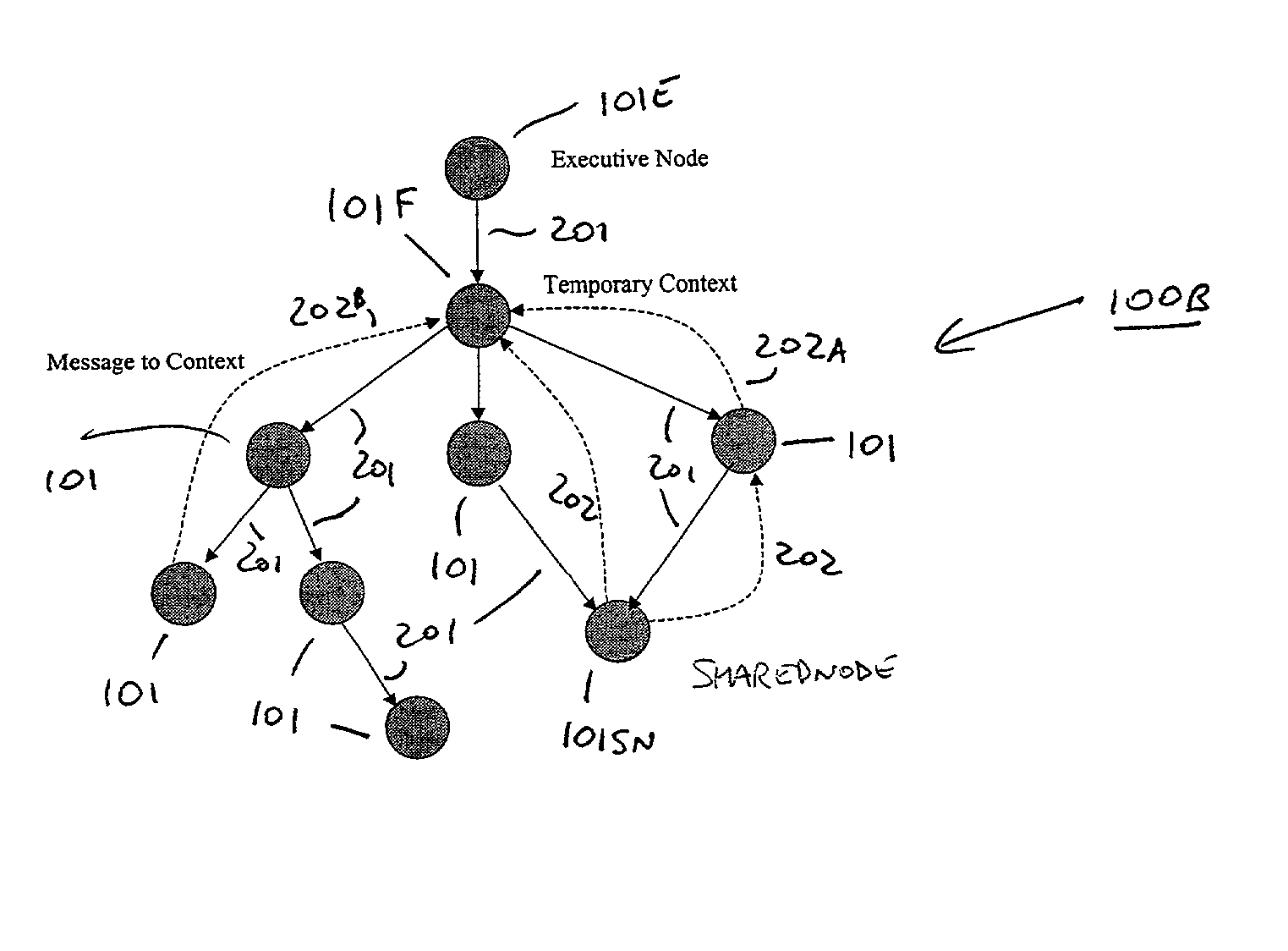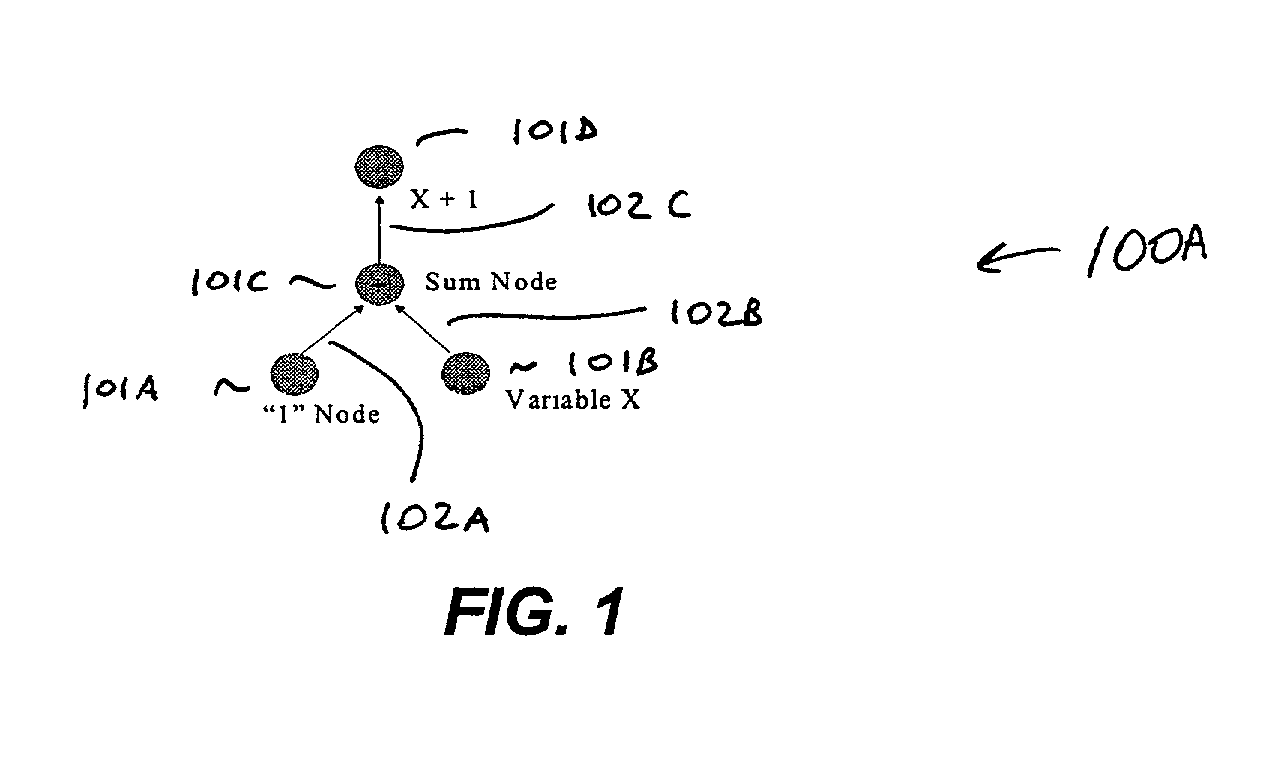One problem that is prevalent in much of the software being developed according to currently available methods is its inflexibility.
The real world demands flexible solutions to ever-changing problems; yet currently available software that is used to address those problems is relatively rigid, inflexible, and difficult to adapt to changing needs.
Often, the burden is on the user to find creative ways to deploy software to effectively solve real-world problems.
Although software capabilities have improved dramatically, the trend toward ever more complex and larger programs has resulted in many examples of software that is less flexible and less capable of serving future needs of users.
Monolithic applications containing more and more features often fail to provide the streamlined,
effective solution a user is seeking.
To the extent that a computer language is limited in what it can represent, the algebra of real-world objects can only be approximated, not duplicated.
This is a common problem in conventional software applications and languages.
Although many simple problems can be mapped onto a
tree structure, real-world problems are often too complex for such mapping to be substantially accurate.
Thus, the "compile, link, load and run"
software development paradigm yields code which is relatively inflexible and which in general cannot be adapted to changing needs without replacing the entire program.
The inflexibility of software has led to ever-enlarging releases of
commercial software applications.
Because the software cannot be altered once it has been compiled and distributed to customers, developers often include large quantities of special-purpose code to address possible situations, options, or functionality that may ultimately be needed by only a fraction of the overall user base.
Software applications thus become much larger than they otherwise would be, and often still fail to anticipate the needs of many consumers.
Furthermore, the monolithic style of releasing software demands that entire applications be provided in one
package, either on a CD-ROM or via a single large download.
Unfortunately, interpreted programs tend to be slow.
However, JIT compilers only optimize the code once for all situations, and therefore are limited in the type of optimizations that can be made.
Furthermore, JIT compilers are generally incapable of optimizing across modules, and are unable to recompile
on the fly, since conventional computer languages do not allow a program to alter itself while it is running.
Another problem with conventionally compiled software is that, because of the rigidity of conventional computer languages, there is generally no mechanism for such languages to express changes to the code itself.
As a result, self-modifying code is not generally known or widely used.
The methodology of compiled programs provides no mechanism for the
programming language to provide information about the program itself.
The elegant simplicity and self-modifying nature of LISP has made it popular in academic research; however, it is rarely used in commercial applications.
The simplicity of the language makes programs notoriously difficult to read, and because LISP is interpreted, program execution tends to be slow.
In addition, LISP employs a standard hierarchical
execution model that imposes its own limitations.
Without encapsulation, modules develop intertwined dependencies that make improvements difficult.
Inheritance is a useful and widely used technique, but it raises significant problems when implemented in a strict object-oriented
system.
Firstly, inheritance can sometimes be incompatible with encapsulation.
If both classes are to receive it, a timing conflict may arise as to which class receives the message first.
Often the sequence of message
receipt has significant consequences for the operation of the
system.
Since most object-oriented systems contain many
layers of inheritance, the number of possible sequences can often be unwieldy.
This can exacerbate the above-described conflicts and further increase the complexity of object relationships, in that there are now three or more classes that need to respond to a message.
However, most object-oriented languages use the "compile, link, load and run" paradigm, and therefore cannot provide run-time inheritance.
This leads to inaccurate ideas, such as the idea that an automobile is derived from bolts.
A result of this unnatural hierarchy is computer programs having behavior that is markedly different from what people expect.
Thus, inheritance schemes as found in conventional computing environments tend to prevent software engineers from accurately reproducing the algebra of the real-world object being represented.
However, most object-oriented systems retain the deterministic and synchronous nature of traditional languages, and do not employ a new
execution model.
Furthermore, object-oriented languages are typically implemented using the "compile, link, load and run" paradigm described above, and therefore cannot produce software of a radically different nature from the user's point of view.
Most of the advantages of object-oriented
programming are only available to the developer of the software, and end users cannot make use of them.
Online applications have the potential to be larger and more complex than conventional monolithic applications.
Some applications allow for plug-in modules, but in general such plug-ins offer a limited degree of
modularity.
Some interpreters preserve
modularity so that it is visible at run-time, but most do not allow restructuring of a program while it is running.
However, these levels of abstraction are generally too low to be of use to end users.
Since there may be a large number of possible routines, most of which are rarely used, creating all of them at startup would consume unnecessarily large amounts of memory and time.
 Login to View More
Login to View More  Login to View More
Login to View More 


